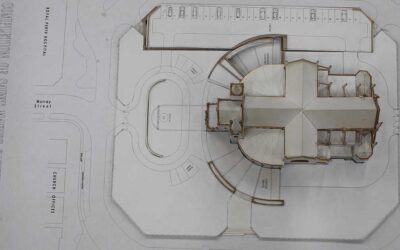Using Collections Management Systems to Enhance Access

Margot Note
Archival repositories, by their nature, can sometimes be slow to change, more interested in preserving the past than delving into the future. Therefore, successful change management—the approach to prepare, support, and help institutions in making organizational change—becomes critical.
Implementing a collections management system (CMS) is one of the most extensive and significant projects that archives can undertake.
Content and Context
In an evolving digital environment, archivists face challenges in locating representation tools to provide accessible content while maintaining context. The twenty-first century offers challenges and opportunities for archival access, including the suspension of geographical and temporal boundaries through a digital representation of collections—and renewed collaboration efforts between archives and users. Digital surrogate availability adds a dimension to access that requires new processes for archivists. Archivists create databases of historical materials and searchable finding aids to improve access to collections.
More Visitors
Collections management systems are robust tools for inventory, accessibility, and contextualization. Because of the enhanced discoverability offered by a CMS, archival repositories see significant increases in the use of their holdings. Archivists who have implemented a CMS discover more requests and more visitors—both online and in-person. A CMS, importantly, can gather metrics related to this increased engagement, which can be used to advocate for the archives department internally. Many decision-makers within an organization, who have power over budgeting, staffing, and resources, may not understand the value that archives—and archivists—provide to their institutions. Making subjective arguments alone may not win them over, but these same arguments, backed by statistics related to use and engagement, can persuade leaders within our organizations to better support our work.
Online Access
By using a collections management system for accessioning, cataloging, and managing collections, an archives eliminates the barriers of distance and travel expense by providing online access to a broader variety of materials. The coronavirus pandemic has pushed the boundaries of virtual research, pressing archival institutions to offer their collections in creative ways. Users can search at their own pace without relying on subject experts. In addition, archivists can catalog portions of collections on-demand, as researchers request materials or staff members schedule artifacts for an exhibition. Users can approach the archives looking for sources found online through the CMS display and later can access other collections through the traditional methods. A collections management system allows archivists to introduce unknown or underutilized materials to users.
Technology is not the most crucial aspect of a CMS implementation; archivists, their colleagues, and their patrons are. Technology supports people and not the other way around. A software solution will not automatically solve organizational problems, because most technology programs are process problems, informed by people, policies, and procedures. An archival CMS functions as a tool adapted to serve archivists to meet their repositories’ missions. Yet, it is only one aspect of professional practices to help archivists organize collections information. The system can be as straightforward or as complex as the institution desires, but only as useful as the data it contains.
Maximizing Your Investment
Installing a collections management system requires much to be done to ensure that the project is successful and the CMS is viable over the long-term. Once the system is running, archivists will be pleasantly surprised at its capabilities and the opportunities to maximize their investment. Implementing a CMS places archivists in a better position to add value to collections and enhance the organization’s competencies for scholarship, pedagogy, and recreational learning.
The digital age offers new opportunities for archives and special collections, evidenced by enhanced discoverability, community outreach, and digital services. A properly deployed collections management system improves archival accessibility, resulting in higher productivity, lower operational costs, and the increased satisfaction of archivists and their patrons, building a compelling future for archives everywhere.

Margot Note
Never miss another post. Subscribe today!
Similar Posts
Cultivating a Community of Archival Practice: A Client’s Success Story
“We need a dynamic system that supports a consistent approach to managing the Perth diocesan collections across Western Australia…ArchivEra is already providing this with Catholic dioceses in Bendigo, Hobart, and Ballarat.”
Honoring Cultural Protocols in Archival Practice
Learn how archives can honor Indigenous cultural protocols, reframe stewardship, and move toward ethical, reciprocal, and community-driven practices.
Centering Sovereignty in Archives: Decolonial Approaches to Indigenous Knowledge
Margot Note explores how centering sovereignty in archives supports Indigenous rights, decolonial practice, justice, and cultural resurgence.
The Ethical Use of Born-Digital Materials in Archives
Born-digital records introduce complex ethical dilemmas involving consent, privacy, preservation, and access. Archivists must rethink ethical frameworks to navigate digital records’ dynamic, fragmented, and often personal nature.




Leave a Comment
Comments are reviewed and must adhere to our comments policy.
0 Comments